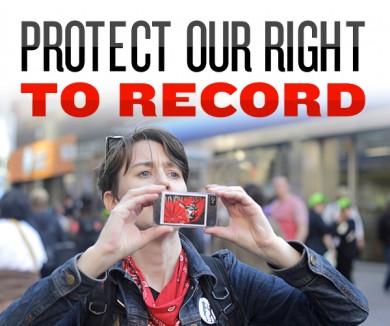Conflicting Messages About the Right to Record
This month, federal agencies and local officials sent two powerful but conflicting messages to the American public about our right to record.
On May 14, the Justice Department submitted a letter to the Baltimore Police Department that provided in-depth guidance on citizens' right to record. The letter was submitted as part of a court case that dates back to 2010. The plaintiff, Christopher Sharp, alleges that after filming the arrest of his friend in Baltimore, police confiscated his mobile phone and deleted the video.


